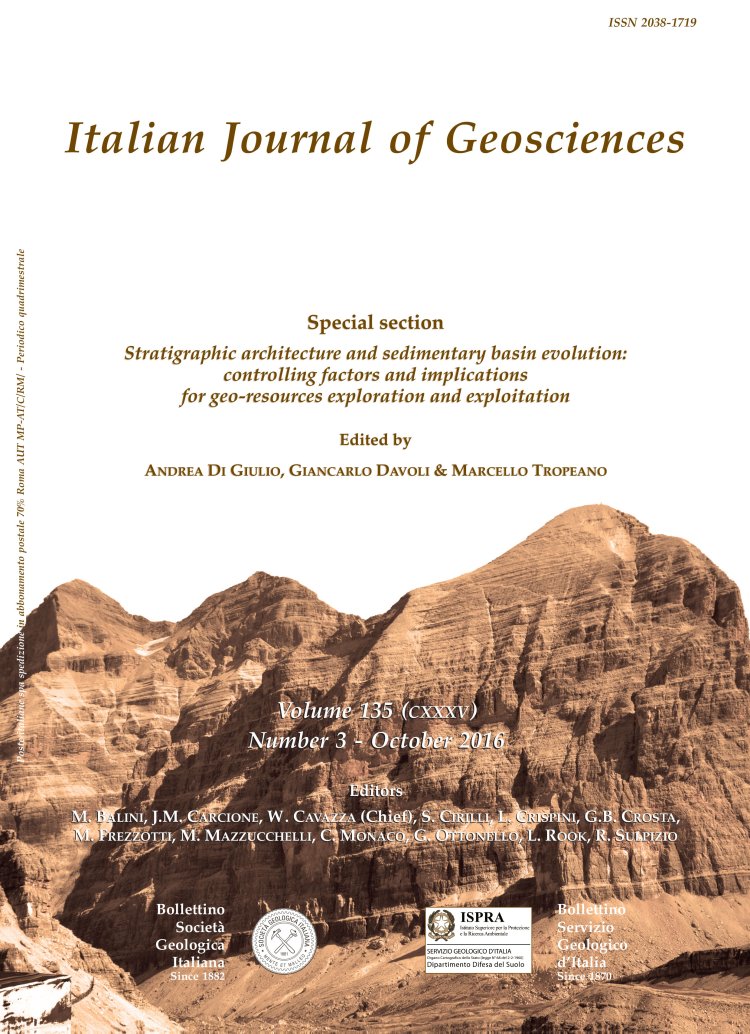
The tectonically confined Firenzuola turbidite system (Marnoso-arenacea Formation, northern Apennines, Italy)
Alessio Tagliaferri (*) & Roberto Tinterri (*)
(*) Department of Physics and Earth Sciences, University of Parma, Italy.
Volume: 135 (2016) f.3
Pages: 425-443
Abstract
The Firenzuola turbidite system formed during an important phase of thrust propagation, involving the upper Serravallian deposits of the Marnoso-arenacea Formation (MAF). During this phase the coeval growth of two major tectonic structures, the M. Castellaccio thrust and the Verghereto high, played a key role, causing a closure of the inner basin and a coeval shift of the depocenter to the outer basin. This work focuses on this phase of fragmentation of the MAF basin; it is based on a new detailed high-resolution stratigraphic framework, which was used to determine the timing of growth of the involved structures and their direct influence on sediment dispersal, as well as on lateral and vertical turbidite facies distribution. The Firenzuola turbidite system stratigraphy is characterized by the occurrence of MTCs (Mass Transport Complexes) and thick sandstone accumulation in the depocentral area, which passes to finer drape over the structural highs; the differentiation between these two zones increases over time and ends with the deposition of marly units over the structural highs and the emplacement of the Visignano MTC. According to the stratigraphic pattern and turbidite facies characteristics, the Firenzuola System (Unit V in the works by Muzzi Magalhaes and Tinterri) has been split into two sub-units, namely Firenzuola I (sub-Unit Va) and Firenzuola II (sub-Unit Vb): the former is quite similar to the underlying deposits (Unit IV), the latter shows the main fragmentation phase, testifying to the progressive isolation of the inner basin and a coeval shift of the depocenter to the outer basin.
Keywords
Marnoso-arenacea Formation (MAF), Firenzuola turbidite systems, foredeep turbidites, syntectonic sedimentation, basin confinement, piggyback basin, ponding processes.
Get Full Text